BMW F 800 GT (2013-2019) Maintenance Schedule and Service Intervals
This is the maintenance schedule and service intervals for the BMW F 800 GT, BMW’s middleweight sport touring motorcycle, made from model years 2013 through to 2019.
The BMW F 800 GT was first announced in 2012 for the 2013 model year. It took over duties from the BMW F 800 ST, which used the same basic engine.
The BMW F 800 GT is powered by a 798cc four-valve-per-cylinder liquid-cooled DOHC parallel twin engine that makes 66 kW (90 hp) at 8000 rpm. It puts power down via a six-speed transmission and a belt drive that BMW calls “maintenance free”. The engine is similar to that in the BMW F 800 GS, although in a different state of tune.
From the 2017 model year, BMW updated the F 800 GT for EURO 4 emissions compliance, adding a number of things including a ride by wire throttle. The engine and all basics stayed the same — it’s just without a throttle cable to lube, so the maintenance schedule is basically identical (apart from the throttle cable).
BMW ended production of the F 800 GT after the 2019 model year. In 2020, they released the F 900 XR, which took over “sport touring” duties in a more up-to-date sense.
This site has links for things like oil and spark plugs from which we earn a commission (which unfortunately nobody can save, not even us). If you appreciate this work, then please use those links. Thanks!
BMW F 800 GT Service Intervals
The BMW F 800 GT has 6000 mile / 10000 km service intervals. At every service, change the oil and do a series of checks.
Every two services, check and adjust the valve clearances. And every four, change the spark plugs.
Like all modern BMWs, BMW recommends a standard annual service. So you change the oil and filter every year regardless of mileage. You also do a long list of checks for leaks, condition of rubber and seals, and safety components.
Finally, as the F 800 GT has a belt drive, make sure you keep it to the correct tension. Belt drives are, luckily, otherwise very low maintenance!
What you need to service the BMW F 800 GT
The parts needed to service the BMW F 800 GT have remained the same across the years, as the engine wasn’t updated significantly from a maintenance perspective.
| Part | BMW F 800 GT part spec |
|---|---|
| Oil | BMW recommends using BMW Advantec Pro 15W-50, their own brand, but you can use other 15W-50 synthetic oils of high quality (API SJ/JASO MA2 spec). |
| Oil filter | The standard oil filter is BMW part 11 42 8 409 567, which is equivalent to Hiflofiltro HF160RC. |
| Air filter | BMW part number 13 71 8 529 998, which is equivalent to Hiflofiltro HFA7913. |
| Spark plug | The standard spark plug is an NGK DCPR8E per the manual. BMW part number is 12 12 7 690 603. |
| Brake fluid | Use DOT 4 brake fluid, e.g. Castrol DOT 4, or you can get BMW part number 83 13 2 445 461 for the official stuff |
| Brake pads | Part numbers for the brake pads are 34 11 7 705 216 for the front brake pads (you need 2 pairs) and 34 21 7 722 884 for the rear. |
| Cable lubricant | Use Protect all cable life to lubricate moving cables (not necessary if you have throttle by wire) |
| General grease | Use a lithium soap-based grease for external pivot points like the kickstand etc. |
Maintenance schedule for the BMW F 800 GT
Below is the maintenance schedule for the BMW F 800 GS. It has been adapted to be a little easier to read and to fit this screen.
Notes
- The break-in schedule isn’t included as these bikes are no longer sold new
- Keep repeating the maintenance schedule in the pattern shown.
- Observe the earlier of the time-based or distance-based intervals
| km x 1000 | 10 | 20 | 30 | 40 | |
|---|---|---|---|---|---|
| mi x 1000 | 6 | 12 | 18 | 24 | Every |
| Conduct standard annual service (see below) | Year | ||||
| Change engine oil | ✓ | ✓ | ✓ | ✓ | Year |
| Change oil filter | ✓ | ✓ | ✓ | ✓ | |
| Check / adjust valve clearances | ✓ | ✓ | |||
| Replace all spark plugs (DCPR8E) | ✓ | ||||
| Replace air filter | ✓ | ✓ | Check / replace more often when riding off-road | ||
| Replace belts | ✓ | ||||
| Replace rear judder damper (a.k.a. shock absorber) | ✓ | ||||
| Check belt wheel/pulley, belt pinions, and shock absorbers/judder dampers for belt pinion | ✓ | ||||
| Change brake fluid (BMW DOT 4) | 2 years |
Standard annual Service — BMW F 800 GT
The standard annual service list of items is below.
The list of items changed order in trivial ways between the manuals for different years of the F 800 GT (e.g. splitting out brake discs and brake pads, or including them in the same line), but is basically the same things.
Two notes:
- [D] means items that a dealer does (if you’re a dealer, then do these!)
- [CT] is for models with a cable throttle, before the Ride by Wire update in 2016 (for the 2017-2019 model years). Other maintenance items are 100% identical.
| Standard scope of service — BMW F 800 GS |
|---|
| [D] Performing the brief test using the BMW Motorrad diagnostic system |
| Check coolant level |
| Check/adjust clutch play |
| [CT] Check accelerator Bowden cable for ease of movement, chafing and kinks, and play — only 2013-2016 models which had an accelerator cable |
| Check the front/rear brake fluid level |
| Check the front/rear brake discs for wear |
| Check the front/rear brake pads for wear |
| Visually inspect the brake lines, brake hoses, and connections |
| Check the tire pressure and tread depth |
| Check the toothed belt condition |
| Check the belt tension (adjust if necessary) |
| Check the steering-head bearing |
| Check side stand for ease of movement |
| Check centre stand for ease of movement (when fitted) |
| Check for correct tightening torque of the * Main frame fasteners * Left and right front footrest plates * Eccentric clamp |
| Check the lighting and signal system |
| Check the engine start suppression works |
| Final inspection and road safety check |
| [D] Set the service date and remaining distance to service |
| Check charging state of battery |
| [D] Record the BMW service in the vehicle literature |
About the BMW F 800 GT
The BMW F 800 GT is BMW’s mid-range sport touring motorcycle.
It was meant to be the smaller sibling of BMW’s bigger inline six-cylinder motorcycles, like the BMW K 1600 GT. With one third of the cylinders, it’s definitely a smaller sibling!
The F 800 GT inherits the basic engine from the F 800 ST before it, but gave it a power bump, a redesigned fairing with more protection, better support for a pillion and luggage, standard ABS, and a more comfortable riding position.
The nice thing about the F 800 GT is that even though it’s a mid-range bike, it has a lot of features only found in higher-end motorcycles. The paint is immaculate, and that exposed rear wheel on the side of the single-sided swing-arm is gorgeous to look at.
The engine is capable of doing anything, even though it is unlikely to light you on fire. It’s a 798cc DOHC liquid-cooled parallel twin that makes 66 kW (90 hp) in base trim — and this is a bike that most owners won’t have thrown an aftermarket unit onto. BMW owners tend not to thrash (or crash) their bikes, which makes the used market unusually rich with high-mileage options.
The BMW F 800 GT’s engine thrums with a 360-degree crank, which means the pistons always move up and down together. BMW said that their intention was to create character similar to the bigger boxer twins, and to enhance low-end torque, but the low-end torque has more to do with the state of tune.
The crank configuration does give it unique character though, as other middleweight twins in the market tend to have 180-degree or 270-degree offsets.
BMW uses counter-balancers to ensure the engine is smooth all through the rev range. And unlike boxer twins, the F 800 GT doesn’t kick over to the side when you rev it (though this may be a con!)
In 2017, BMW updated the F 800 GT (and other parallel twin engines like the F 800 GS) to add ride by wire and two switchable power modes, with an optional “dynamic” mode as extra. Many fitted this extra.
Another option on the GT is ESA (Electronic Suspension Adjustment) and ASC (Automatic Stability Control), which is BMW speak for traction control. These were both frequently fitted. Other options (also frequently fitted) were heated grips and a centre stand, though the sports silencer option is more less frequently seen.
The BMW F 800 GT was the last of the line of middleweight sport touring bikes based on the F 800 engine. BMW released the adventure sport touring F 900 XR, but it has quite a different riding position and general character, with its higher-displacement engine with a 270-degree crankshaft.
Tires for the F 800 GT
The BMW F 800 GT’s manual specifies the following tire sizes and pressures.
| Wheel | Tyre size | Tyre pressure (cold) |
|---|---|---|
| Front | 120/70 ZR 17 | 36 psi (2.5 bar) |
| Rear | 180/55 ZR 17 | 42 psi (2.9 bar) |
Reference — Manual for the BMW F 800 GT
- BMW F 800 GT maintenance schedule
- 2013-2016 standard service
- 2017-2019 BMW standard service
The maintenance schedule for the BMW F 800 GT came from the user’s manual for models from between 2013 and 2017. Some screenshots are above.
We used a few from different years and compared them to make sure they were the same.
You can download the user manuals directly from BMW’s website here.
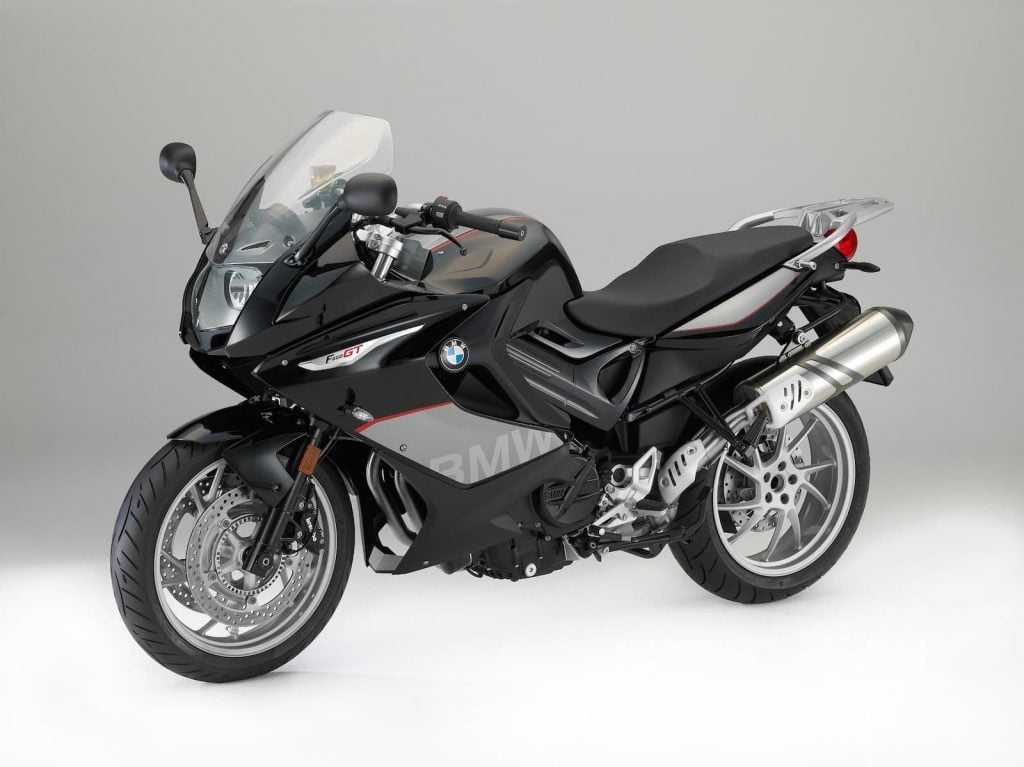

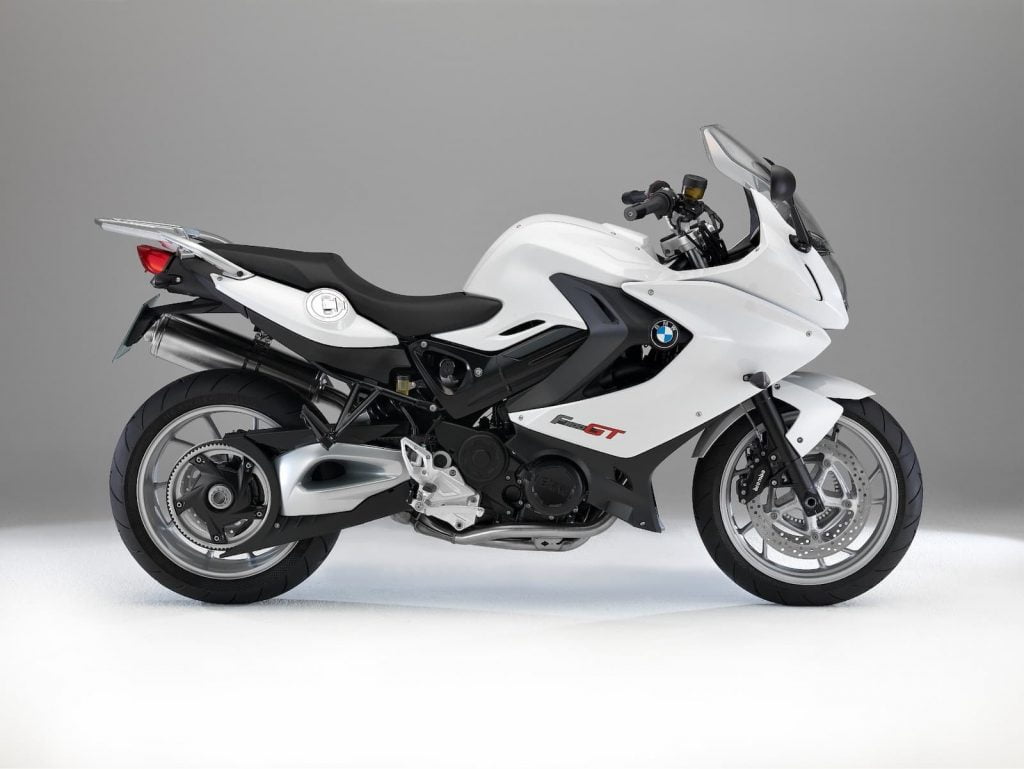
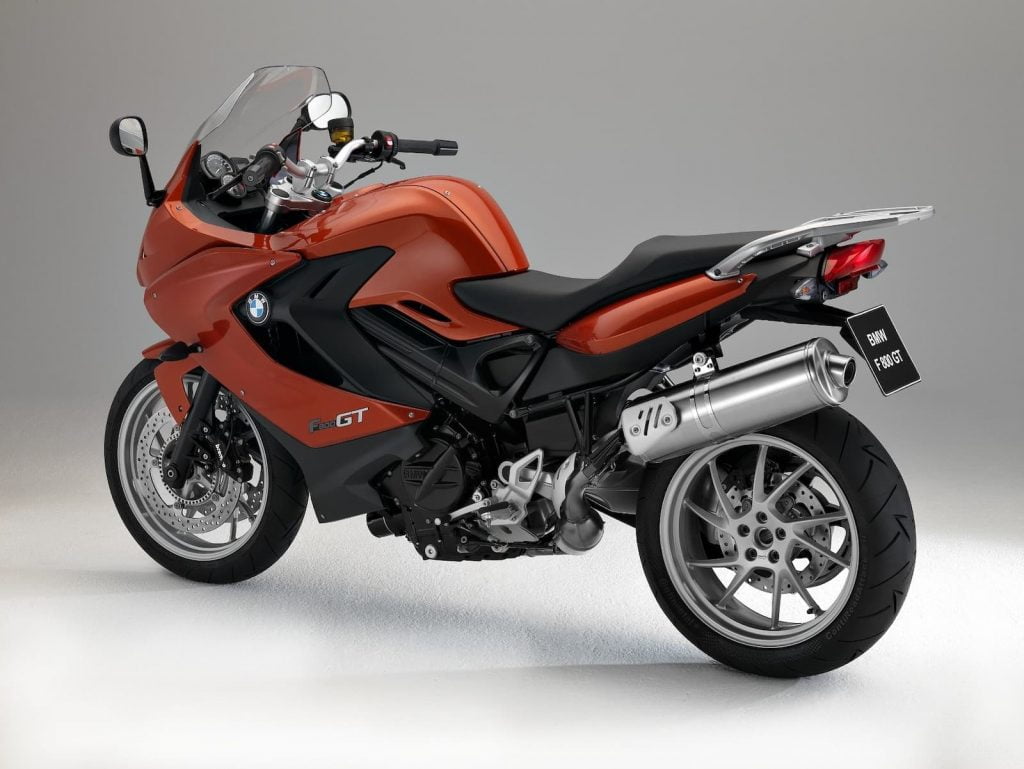
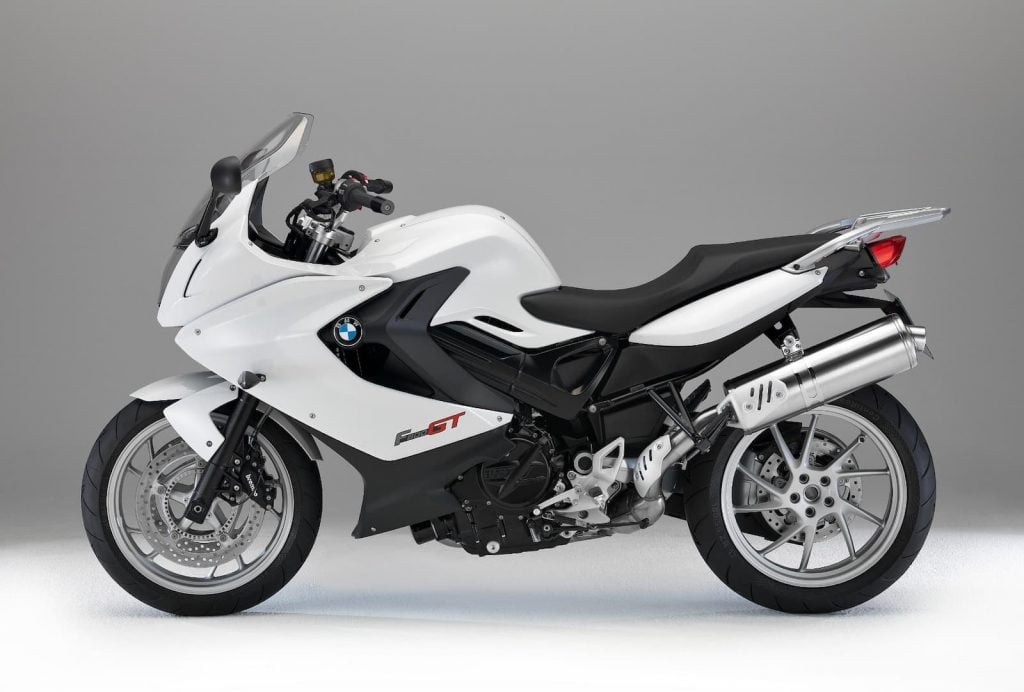
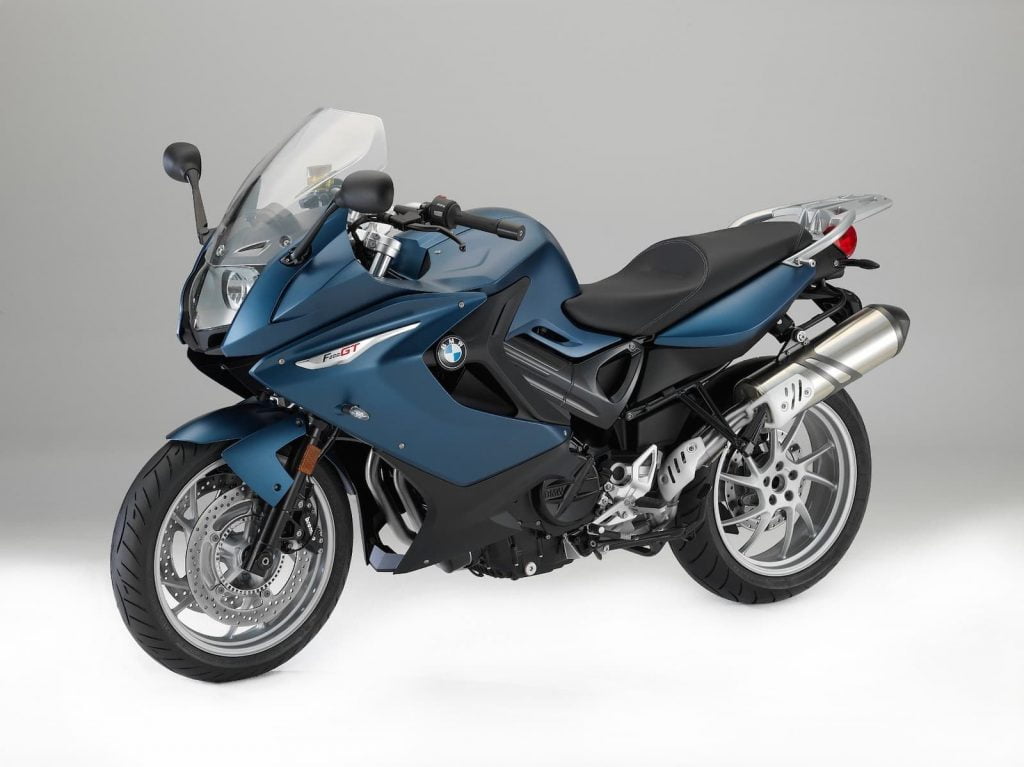
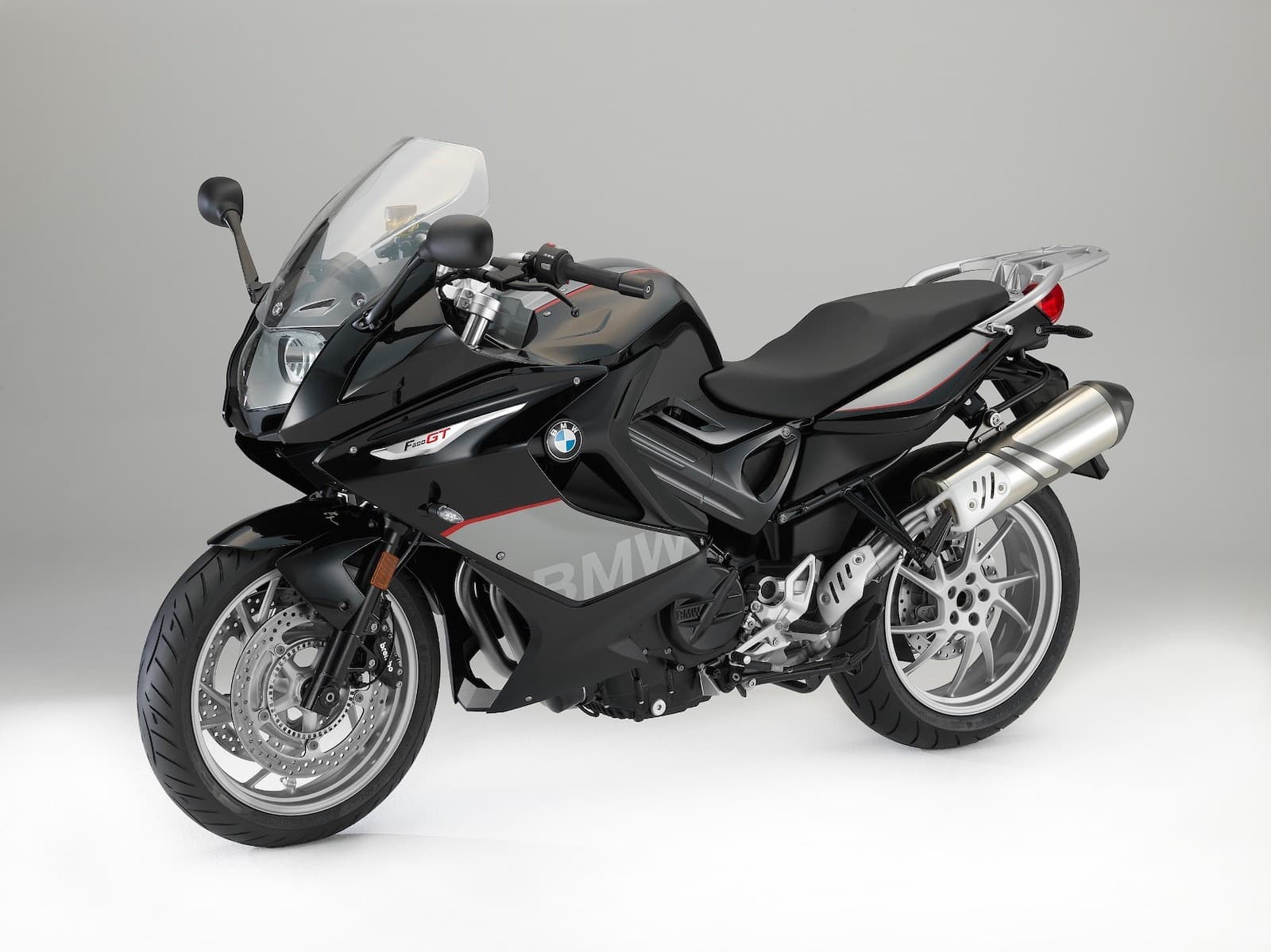
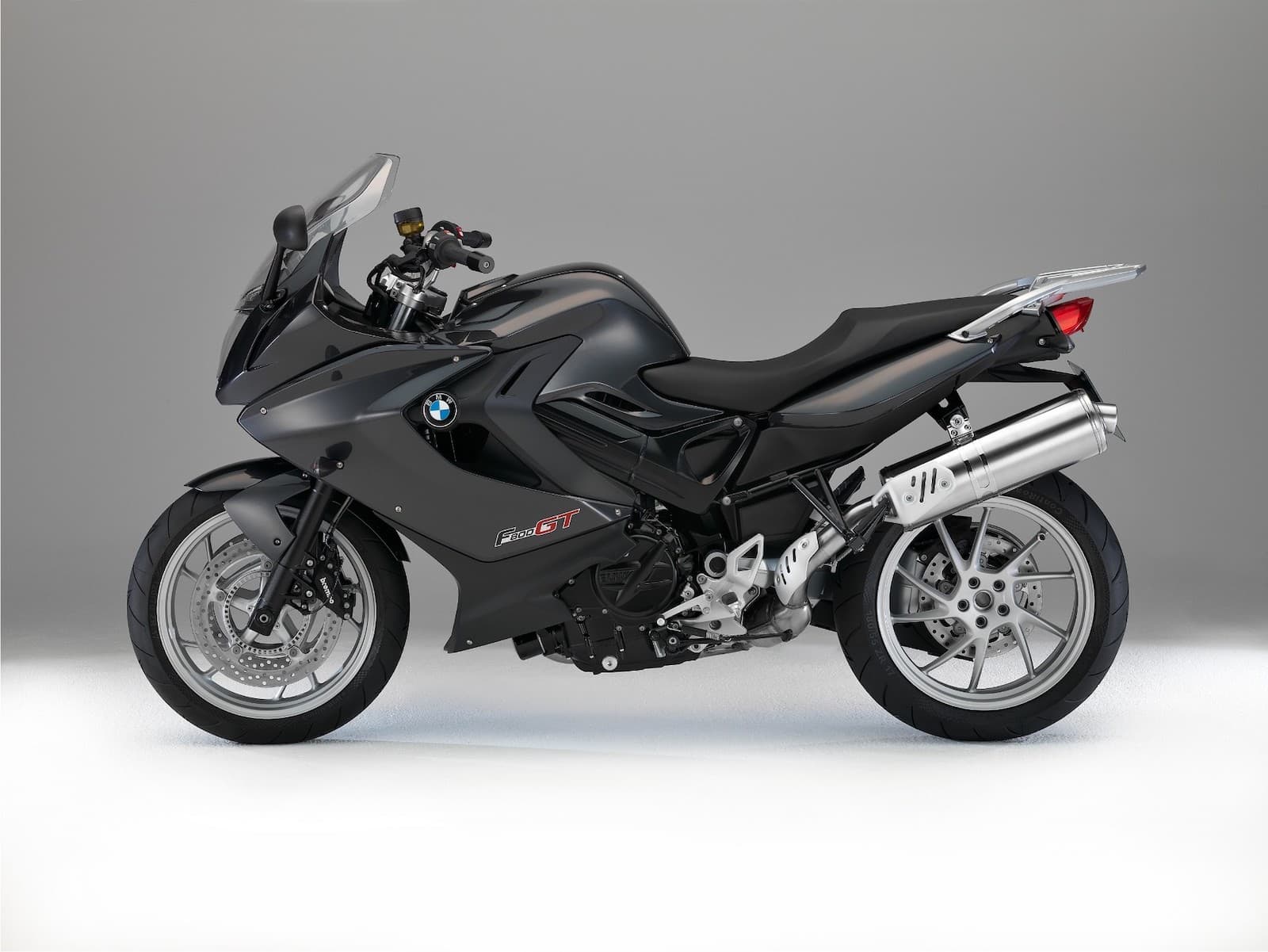
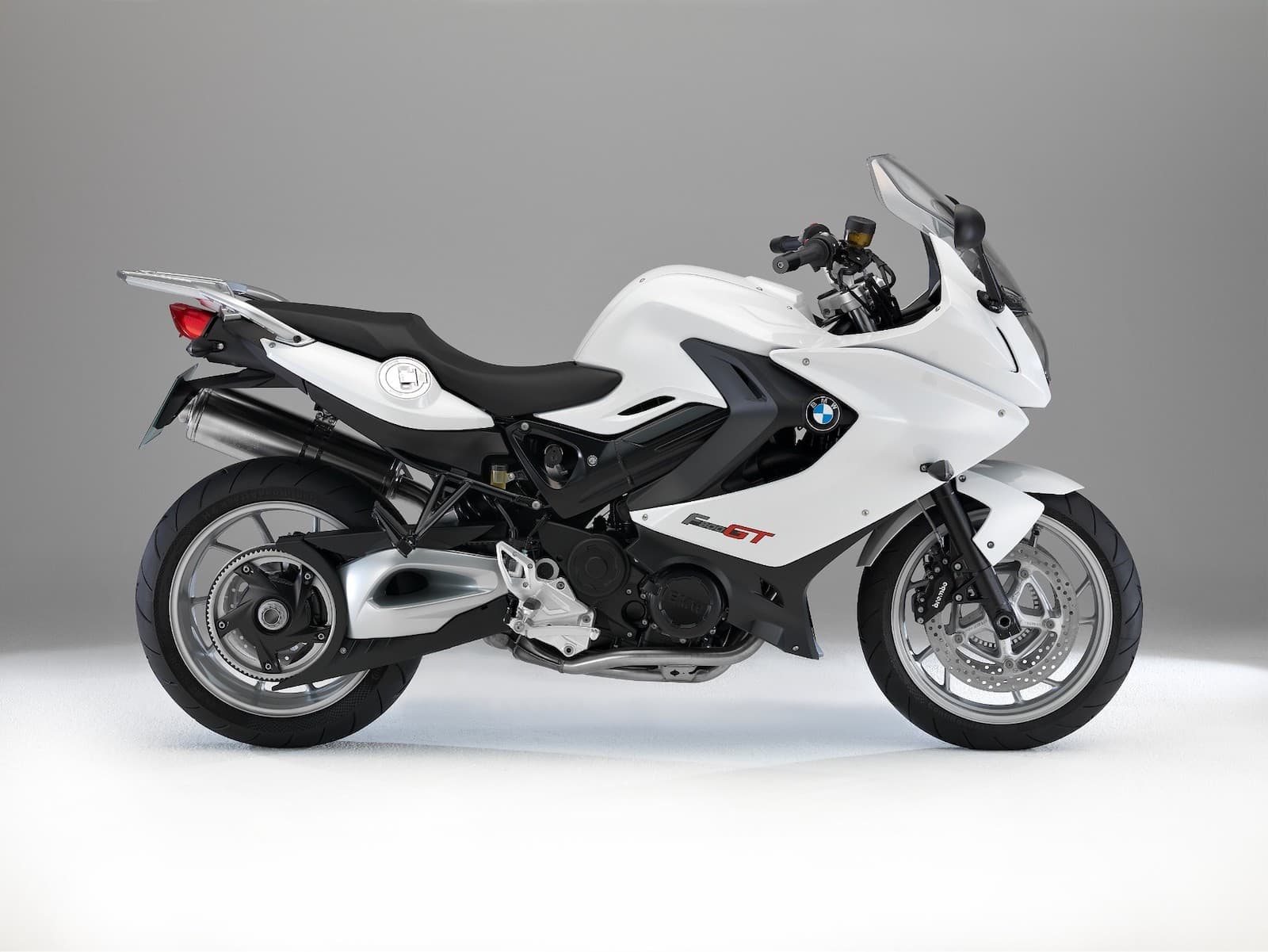
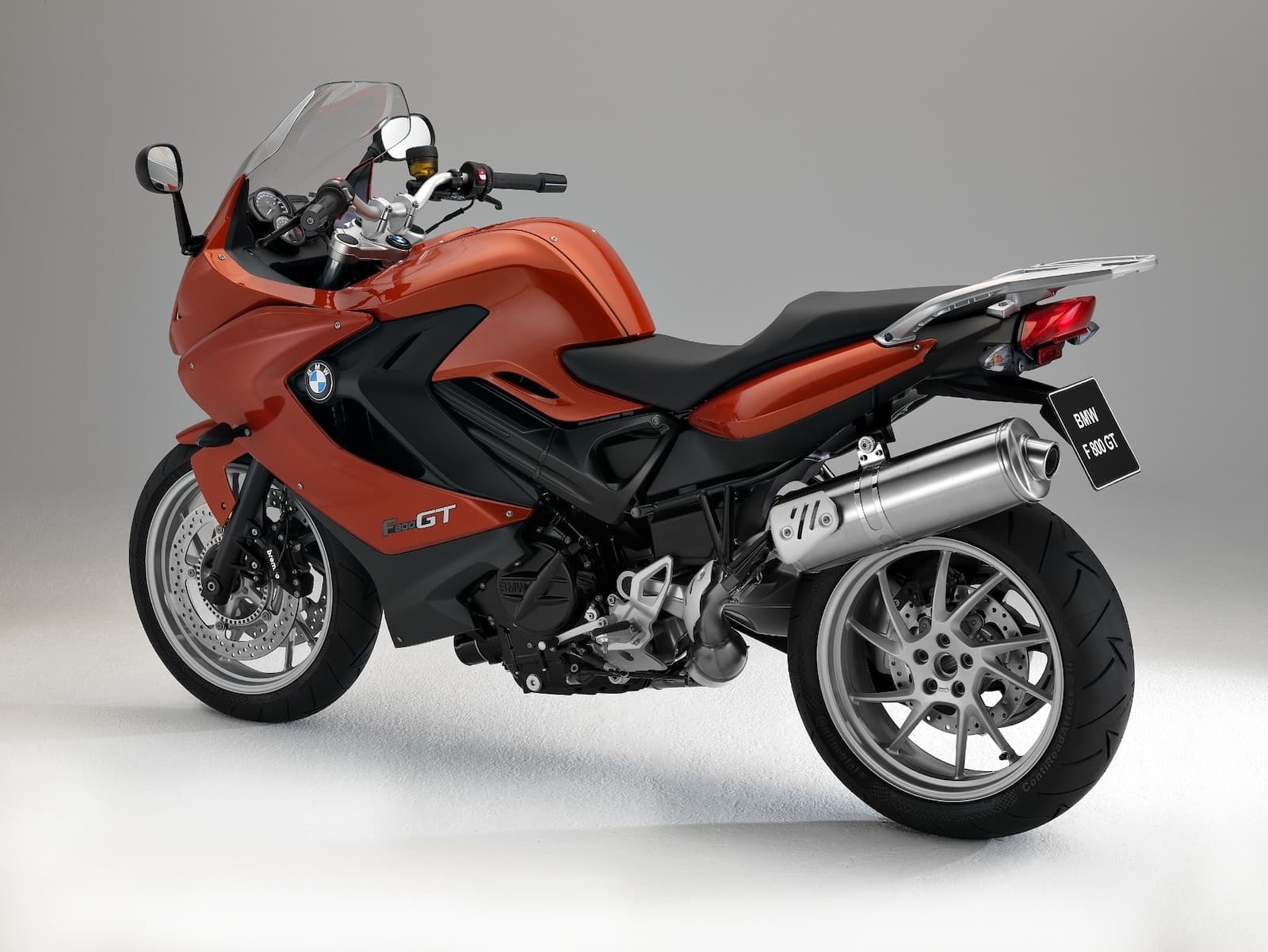
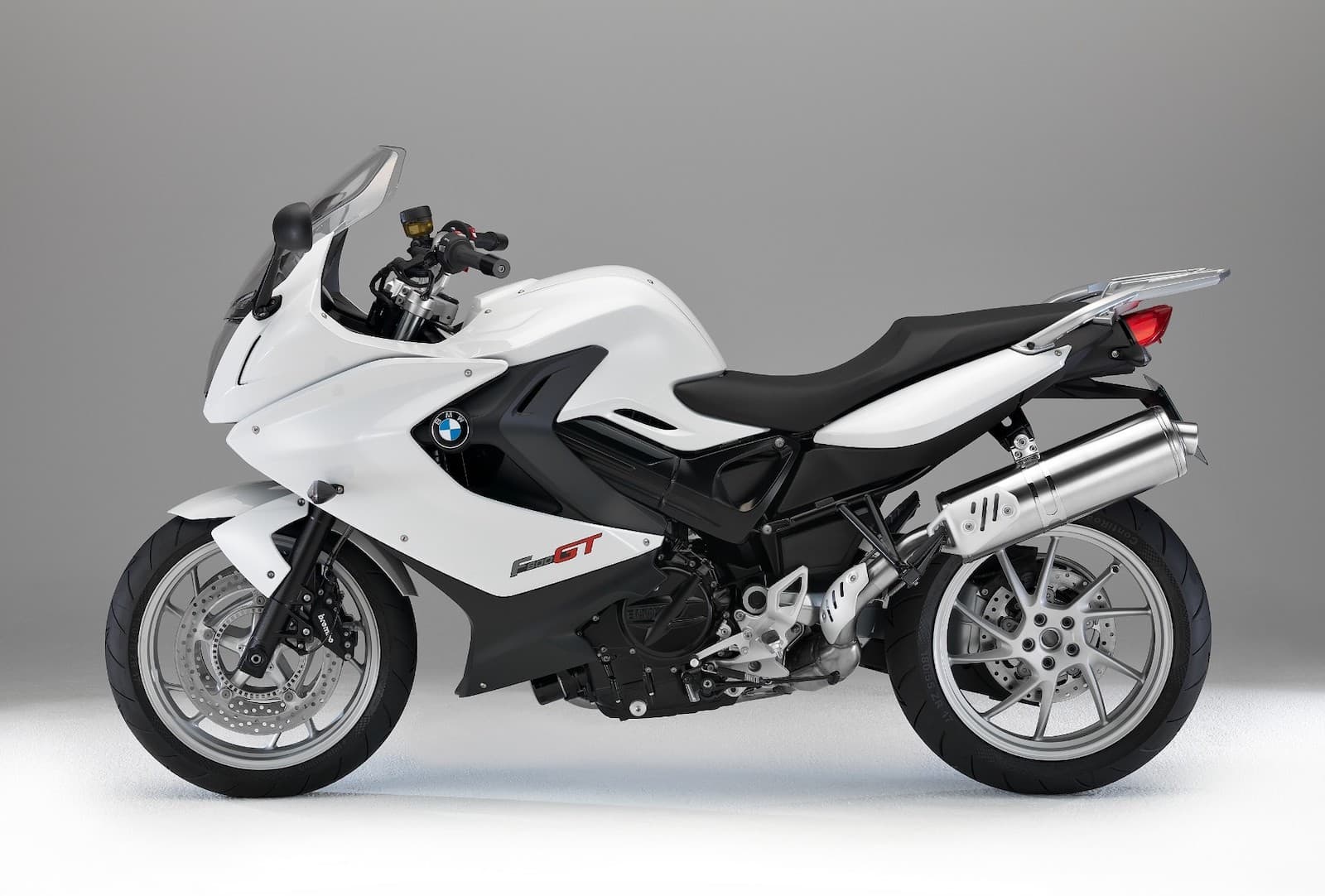
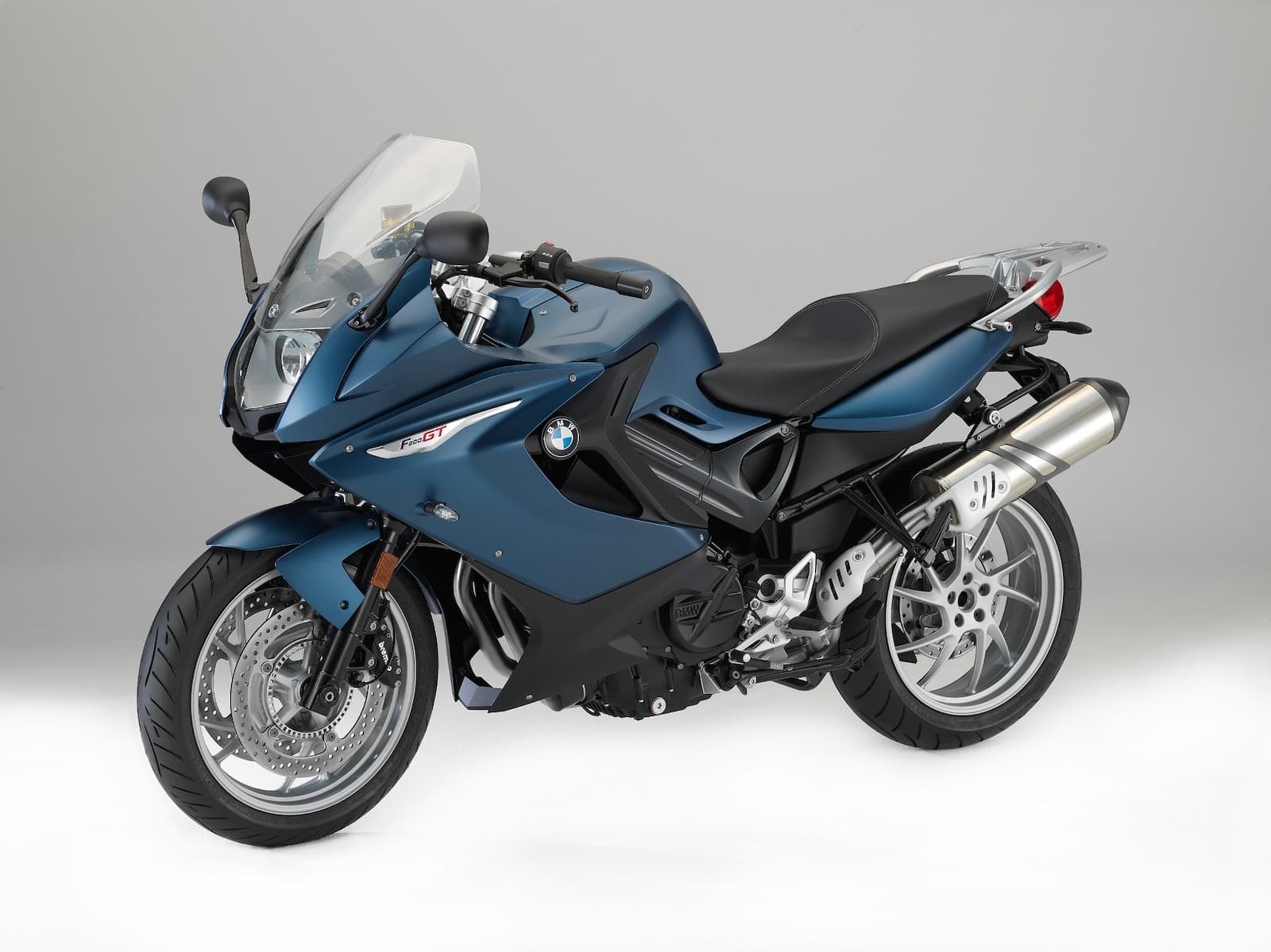
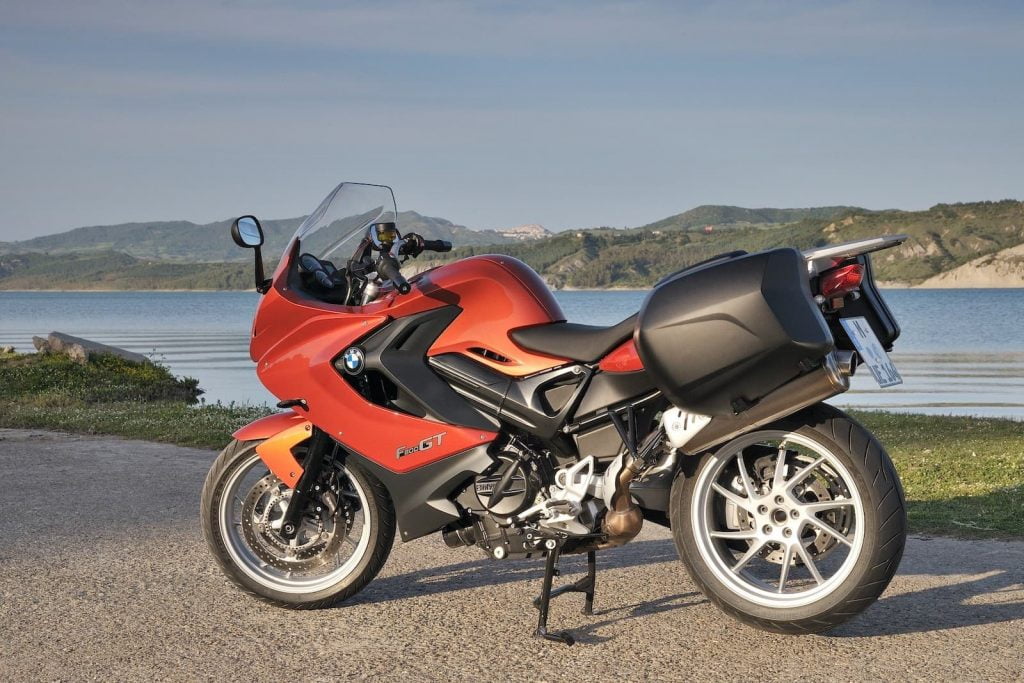
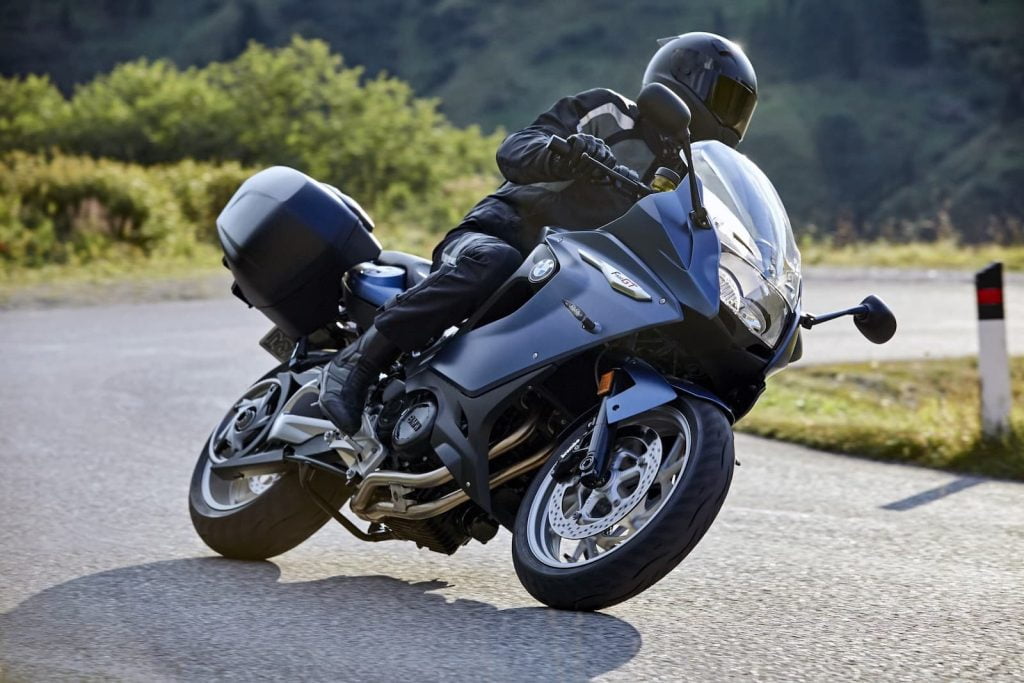
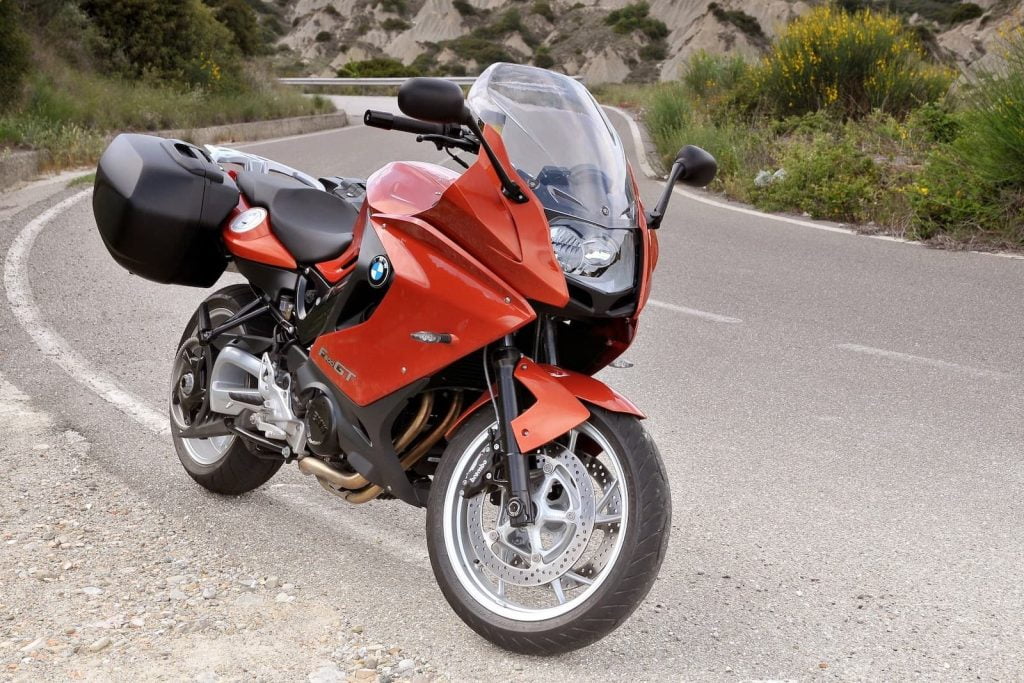
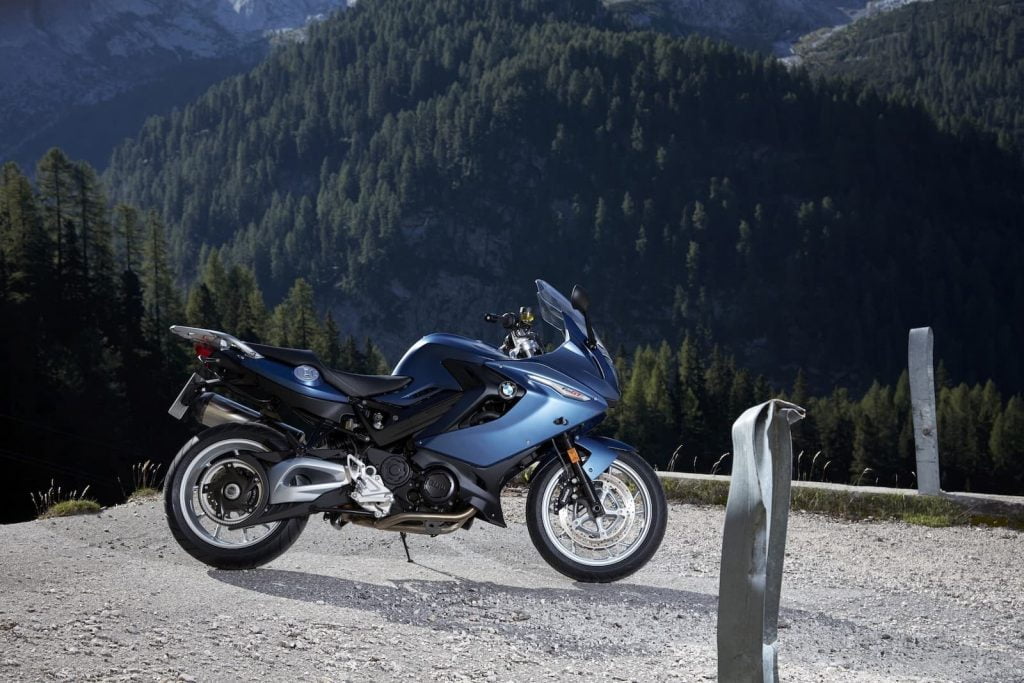

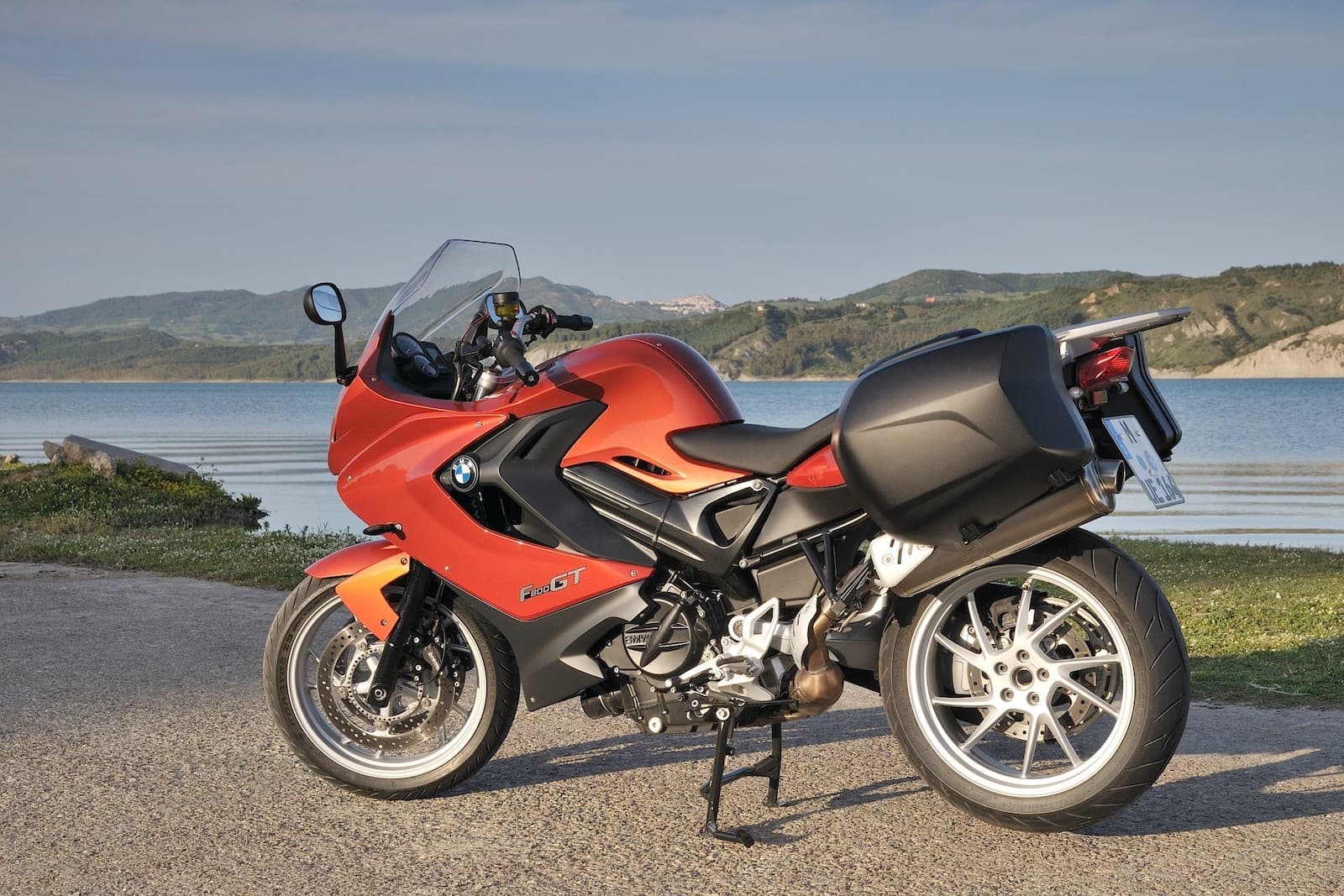
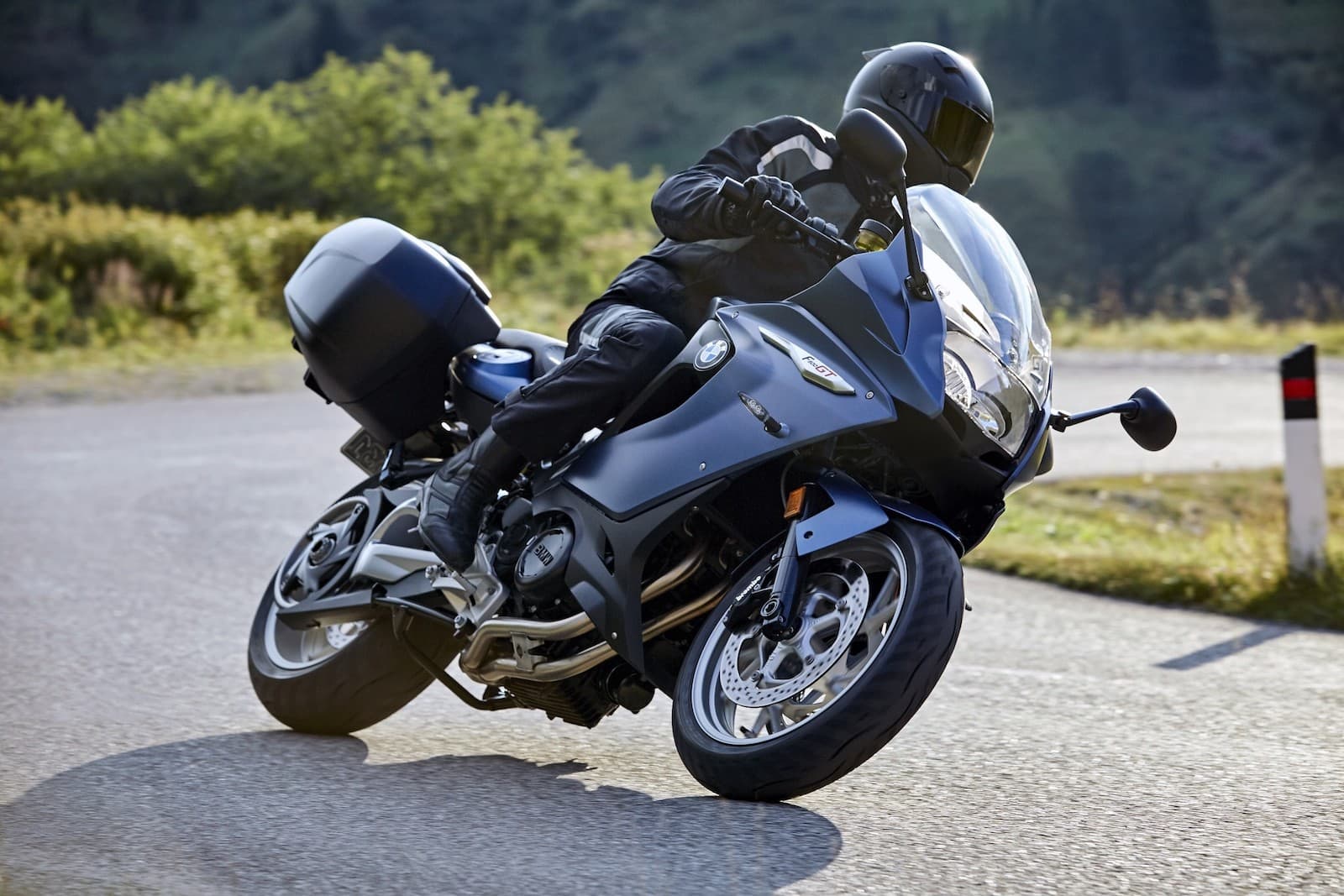
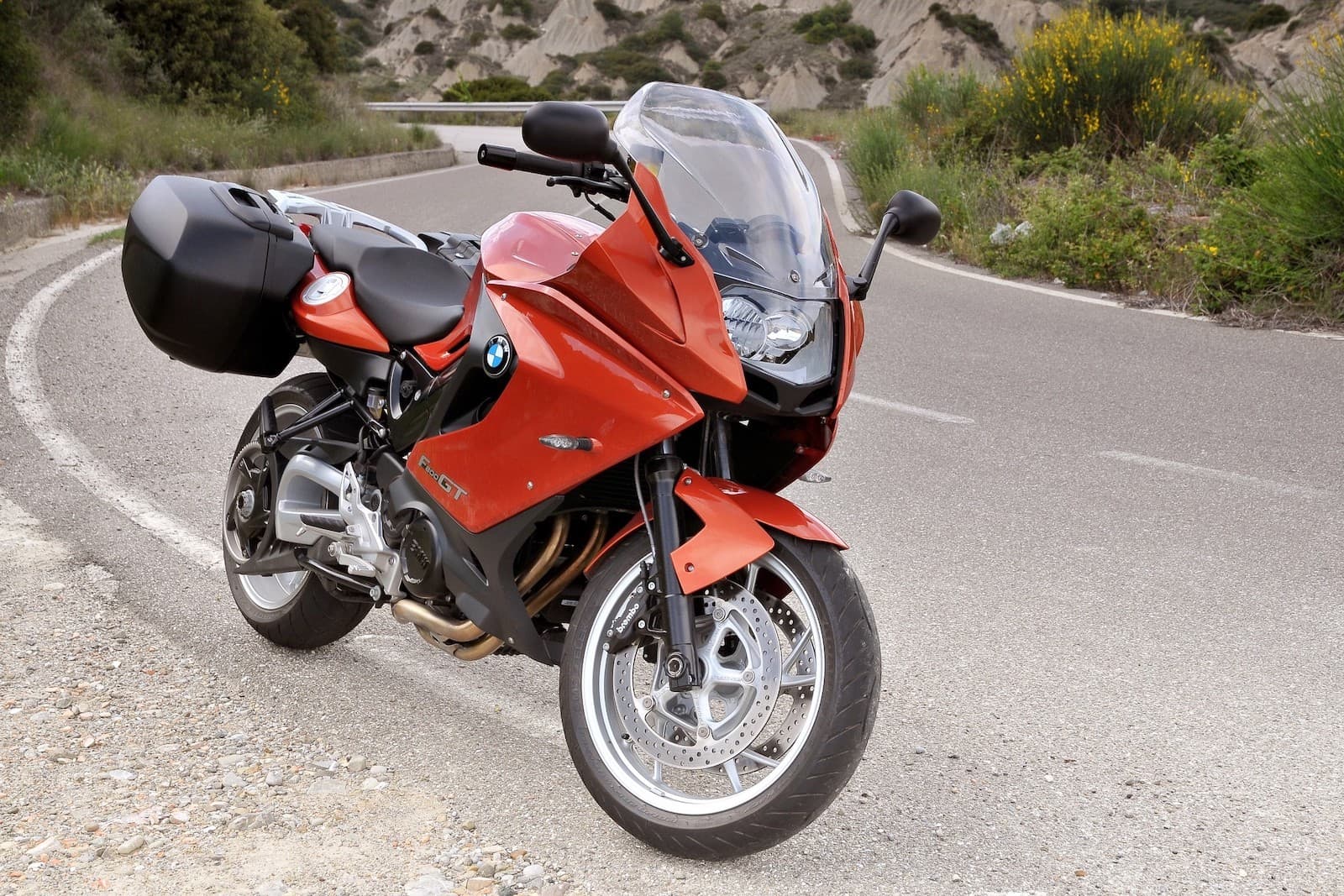
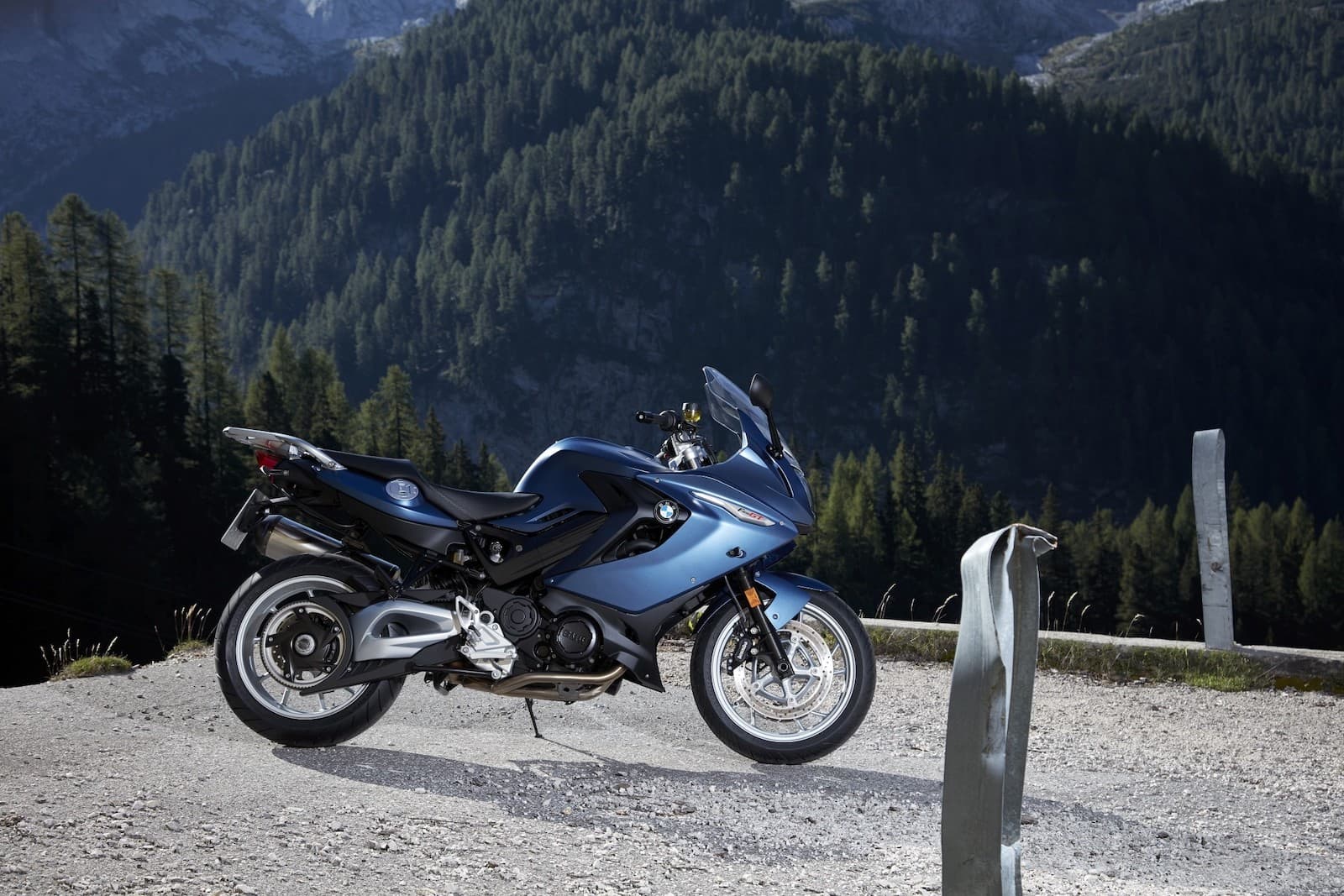
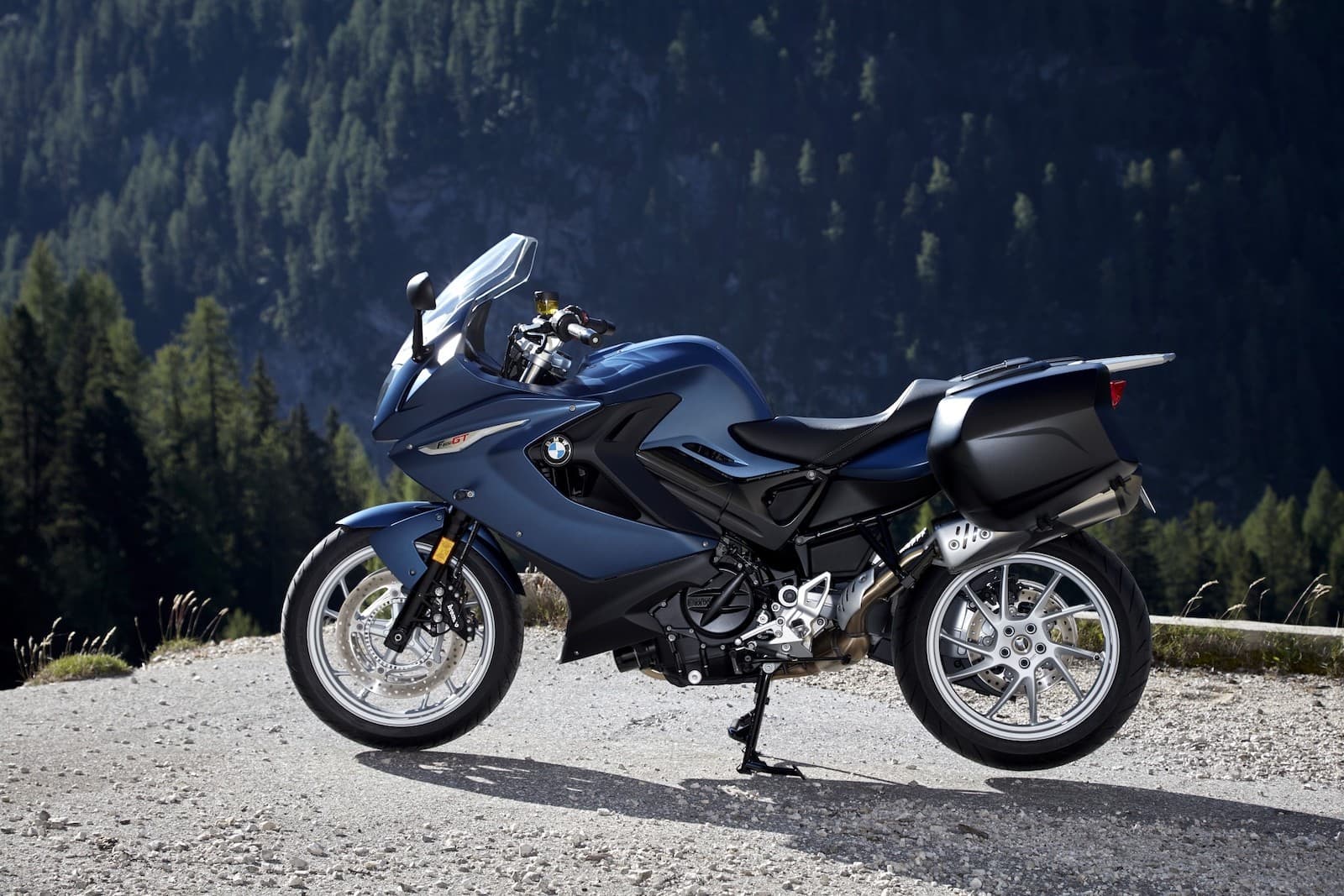
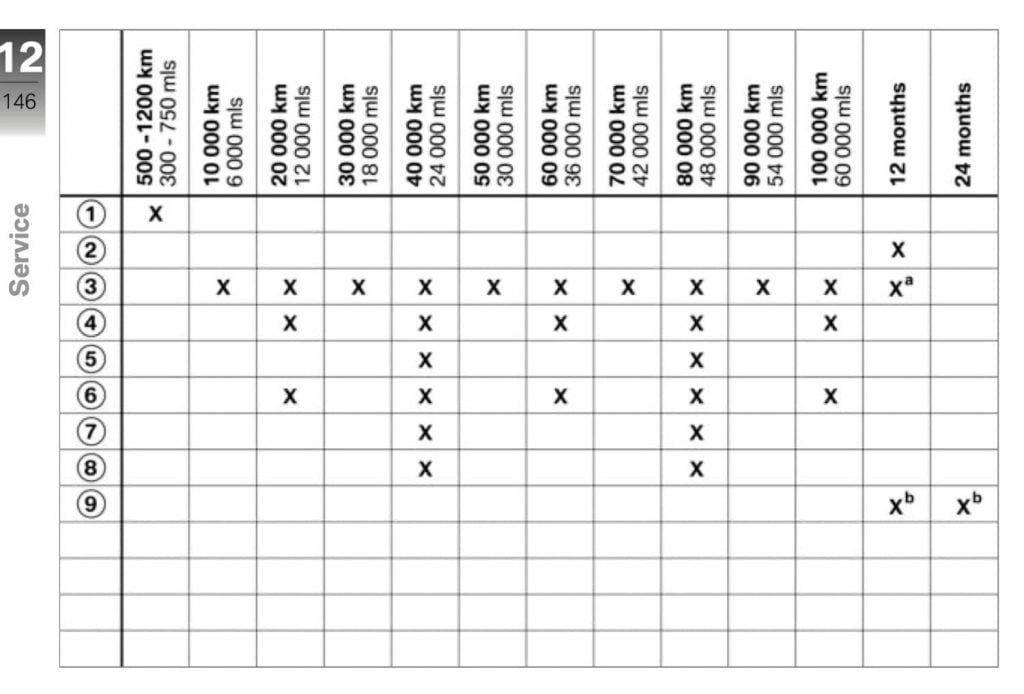
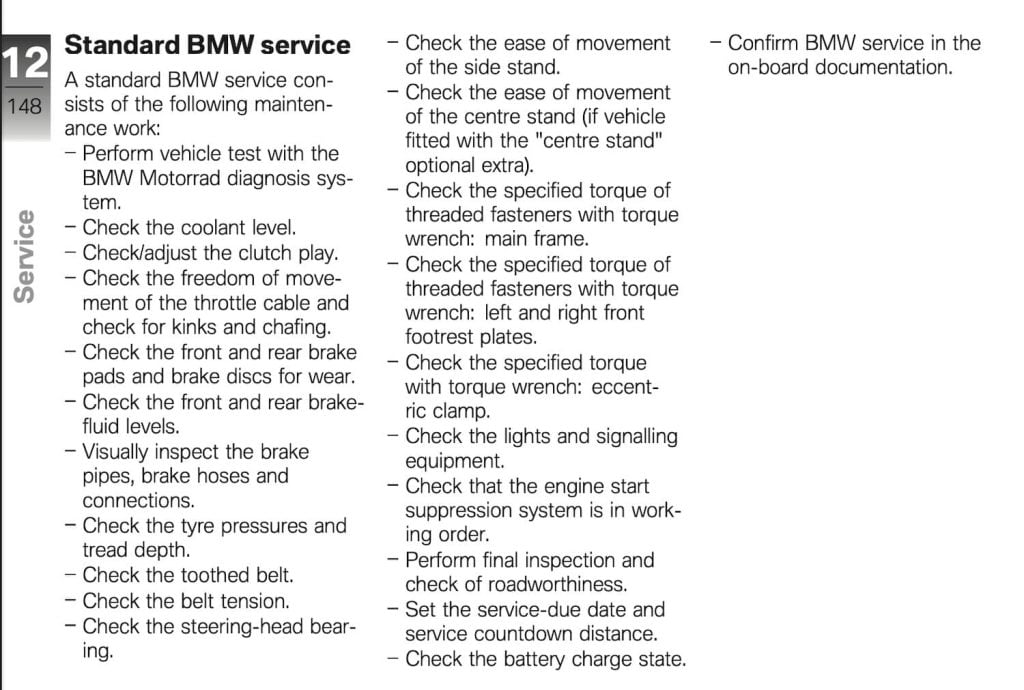
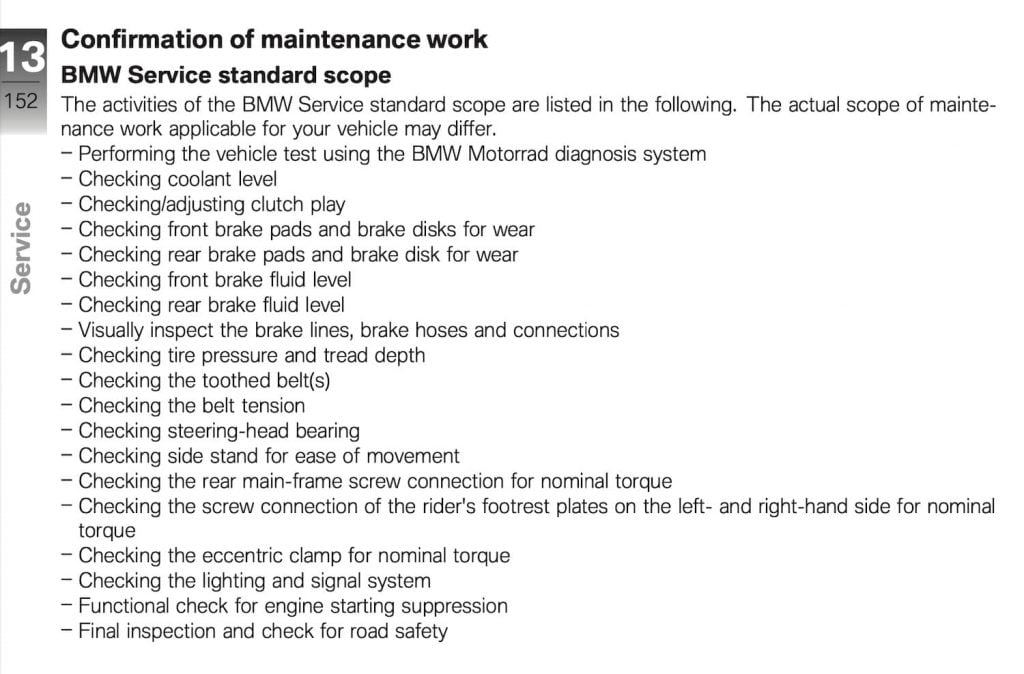
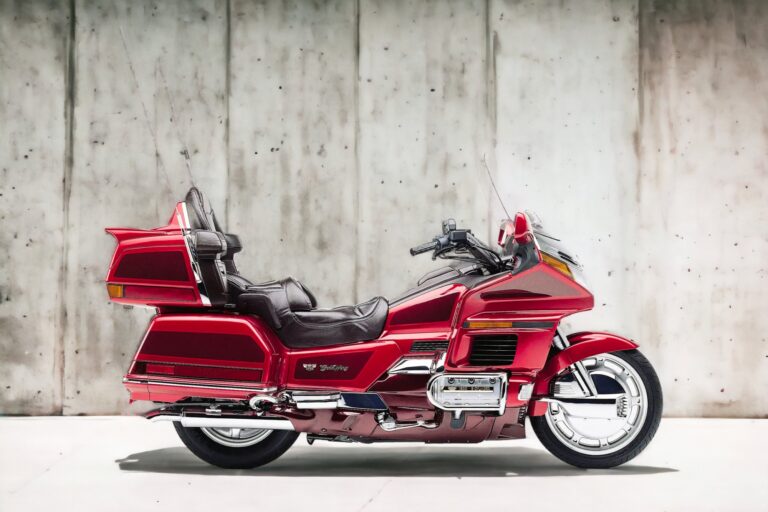
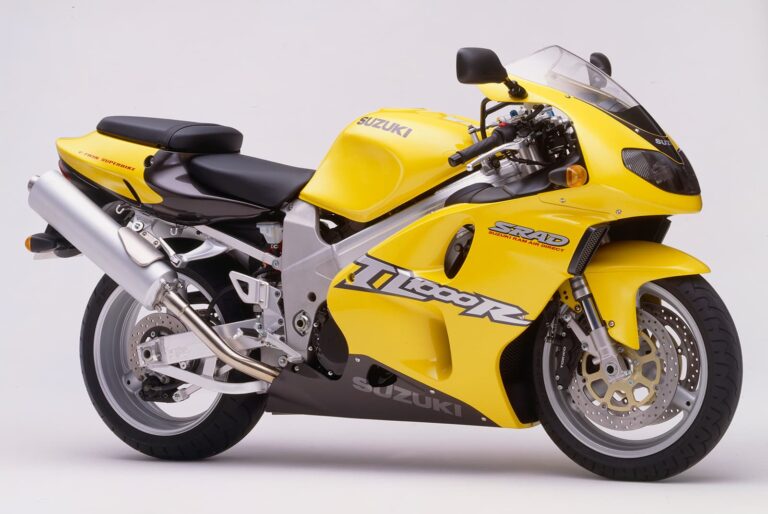
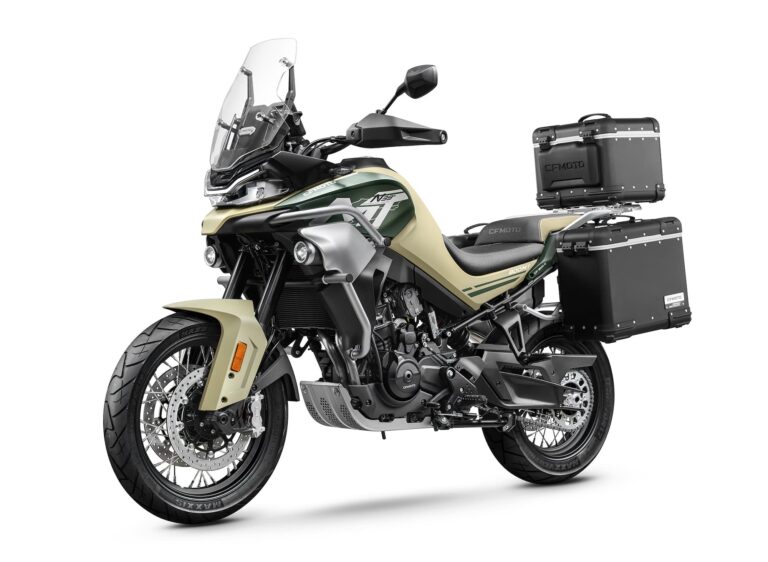

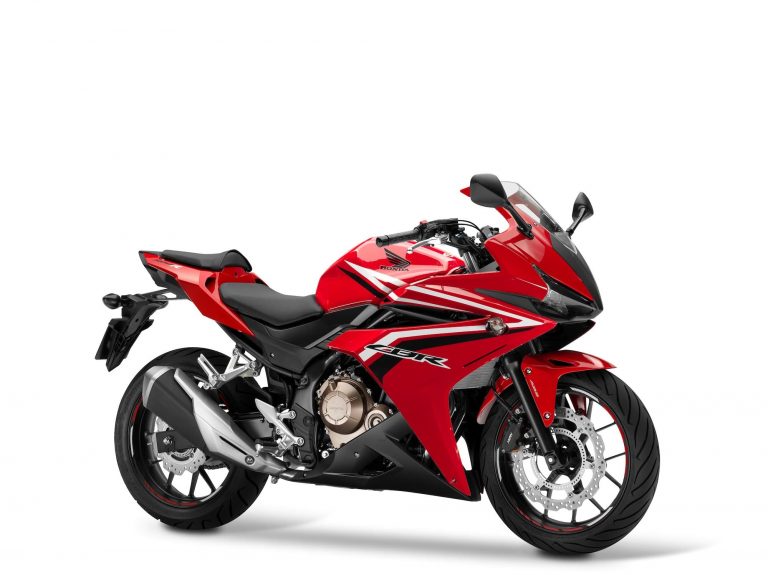
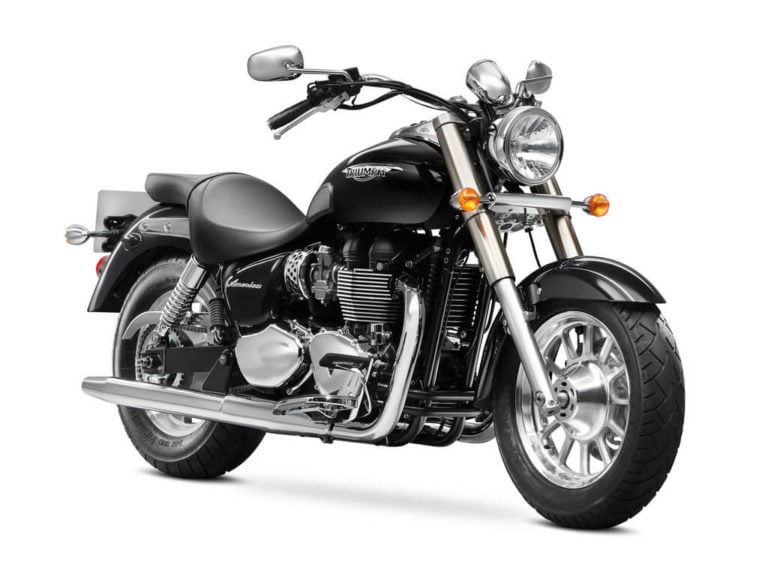
Nice article thanks